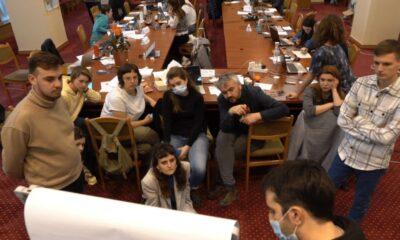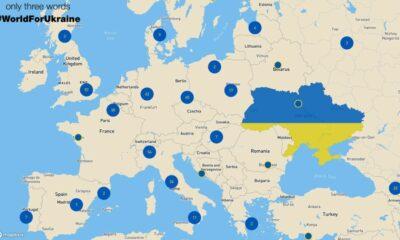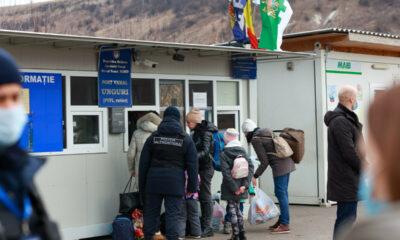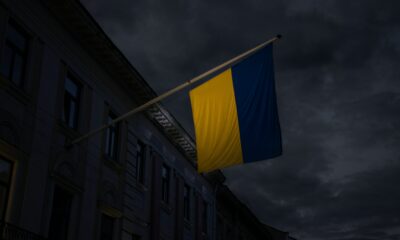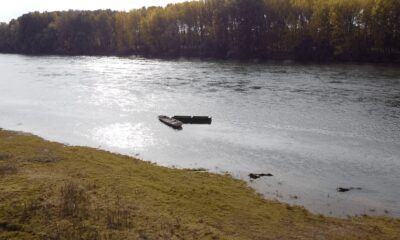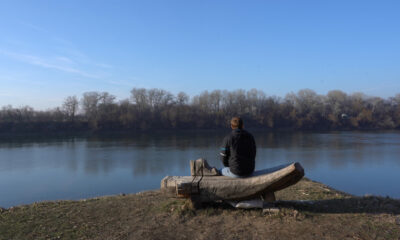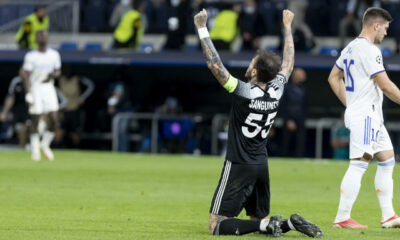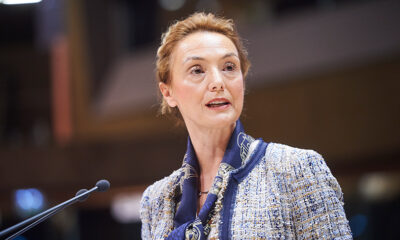Society
Royal wedding: William and Kate set for Abbey service
Reading Time: 4 minutes Thousands of people have camped out overnight on the procession route the couple will take to Buckingham Palace.
Crowds are gathering in central London for the wedding of Prince William and Kate Middleton at Westminster Abbey.
The first of the 1,900 guests will arrive from 0815 BST, with the ceremony itself getting under way at 1100.
Thousands of people have camped out overnight on the procession route the couple will take to Buckingham Palace.
William will wear the red tunic of an Irish Guards colonel – his most senior honorary appointment – but the bride’s dress design is being kept secret.
The Met Office says the day will start off dry but cloudy in London but there is a risk of heavy showers developing later on.
On Thursday night, Prince William went on an impromptu walkabout to meet royal watchers who had thronged to The Mall, near the palace.
He spent several minutes shaking hands, chatting and posing for pictures telling well-wishers: "All I’ve got to do is get the lines right."
William spent Thursday evening with the Prince of Wales, Duchess of Cornwall and Prince Harry, while Miss Middleton and her family gathered at the Goring Hotel, in Belgravia, a short distance from Westminster Abbey.
BBC reporters at the scene estimated between 3,000-5,000 people had been camping overnight in The Mall and around Westminster Abbey, with more than 600,000 expected to line the streets by the time of the service. About two square miles of central London have been closed to traffic.
Scotland Yard says 5,000 officers will be on duty, with more than 900 along the wedding route. Most will be in uniform, but some will be in plain clothes, mixing with the crowd.
Elsewhere in the UK more than 5,500 street parties are taking place – including one hosted by Prime Minister David Cameron at Downing Street and another by the anti-monarchy campaign group Republic.
After the service, five carriages drawn by mounted troops of the Household Cavalry will carry the newlyweds, the Royal Family and the Middleton family on the 15-minute journey from Westminster Abbey to Buckingham Palace.
The route will take them past the Houses of Parliament and Downing Street and, under rows of Union Jacks, along The Mall, to Buckingham Palace, where the couple will appear on the balcony at about 1325 BST.
Royal officials said William and Kate have been involved in planning their wedding day, from the music at the ceremony to the flowers and the cake.
Inside Westminster Abbey itself, six field maples and two hornbeams will line the aisle leading up to the altar.
Some 650 guests have been invited to the palace for a buffet lunch and about 300 close friends and relatives will stay on for formal black tie dinner and disco in the evening.
But the Queen and the Duke of Edinburgh will leave for a weekend away after hosting the lunchtime reception and will miss Prince Harry’s best man speech and Michael Middleton’s father of the bride address.
The Archbishop of Canterbury will conduct the wedding ceremony, which will see Miss Middleton vow to "love, comfort, honour and keep" Prince William but not to obey him.
The couple have chosen royal warrant holders Wartski to make the wedding ring for Miss Middleton. Following a long tradition of royal weddings, it has been fashioned by the Bangor-founded firm from Welsh gold given to Prince William by the Queen.
In their official wedding programme released on Thursday, the royal couple said: "We are both so delighted that you are able to join us in celebrating what we hope will be one of the happiest days of our lives.
"The affection shown to us by so many people during our engagement has been incredibly moving, and has touched us both deeply."
Prince William’s choice of a military uniform for his wedding is something of a surprise, royal watchers say. As a search and rescue helicopter pilot in the Royal Air Force, many had predicted he would wear his blue flight lieutenant’s uniform.
However, as an honorary colonel of the Irish Guards infantry regiment, he has opted to wear the red tunic and forage cap, fitted by military and civilian tailors Kashket and Partners.
Prince Harry is a captain in the Household Cavalry’s Blues and Royals regiment and will wear his uniform, while Prince Charles will be in his Royal Navy admiral’s outfit.
The bride will walk up the aisle to coronation anthem I Was Glad, by Sir Charles Hubert Hastings Parry, from Psalm 122.
t was composed for the crowning of Prince William’s great-great-great grandfather, Edward VII, at Westminster Abbey in 1902.
The couple have chosen to use the Series One (1966) Book of Common Prayer ceremony.
Classical compositions by Elgar, Britten and Vaughan Williams will feature during the ceremony, alongside the hymn Jerusalem and the English melody Greensleeves.
The Prince of Wales and the Duchess of Cornwall, Prince Harry, Miss Middleton’s parents – Carole and Michael Middleton – her sister Pippa and her brother James will all act as witnesses and sign the marriage registers.
James Middleton will also give The Lesson, reading Romans 12: 1-2, 9-18.
Some 50 foreign heads of state are among the wedding guests and on Thursday night, the Queen hosted a drinks and dinner reception for many of them – including Queen Sofia of Spain and Queen Margarethe of Denmark – at the Mandarin Oriental Hotel, near Hyde Park.
But as the final preparations were being completed, the guest list for the event came under scrutiny, with the Foreign Office announcing the last-minute withdrawal of the Syrian ambassador’s invitation amid criticism of the violent crackdown on pro-democracy protests in the country.
Further questions were raised about why former Labour prime ministers Tony Blair and Gordon Brown were not invited.
The Met Office says the weather will become brighter through the morning, with some sunny spells, but there is a 30% risk of showers about noon when Prince William and his bride will emerge from Westminster Abbey after the ceremony.
Temperatures in the capital are expected to reach a high of 19C (66F) in the afternoon.
Society
“They are not needy, but they need help”. How Moldovan volunteers try to create a safe environment for the Ukrainian refugees
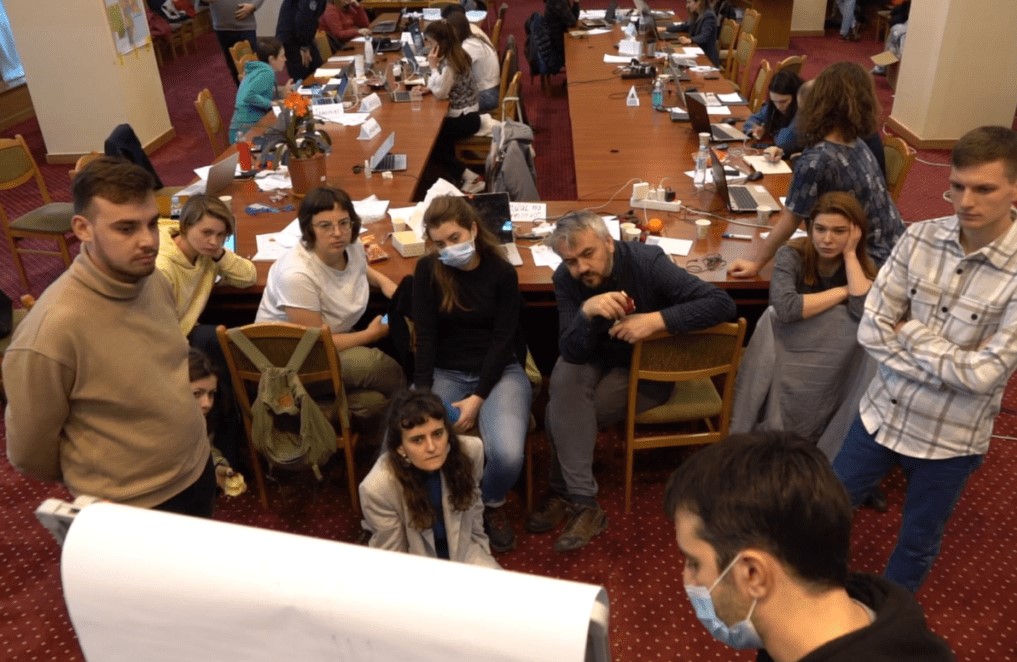
At the Government’s ground floor, the phones ring constantly, the laptop screens never reach standby. In one corner of the room there is a logistics planning meeting, someone has a call on Zoom with partners and donors, someone else finally managed to take a cookie and make some coffee. Everyone is exhausted and have sleepy red eyes, but the volunteers still have a lot of energy and dedication to help in creating a safe place for the Ukrainian refugees.
“It’s like a continuous bustle just so you won’t read the news. You get home sometimes and you don’t have time for news, and that somehow helps. It’s a kind of solidarity and mutual support,” says Vlada Ciobanu, volunteer responsible for communication and fundraising.
The volunteers group was formed from the very first day of war. A Facebook page was created, where all types of messages immediately started to flow: “I offer accommodation”, “I want to help”, “I want to get involved”, “Where can I bring the products?”, “I have a car and I can go to the customs”. Soon, the authorities also started asking for volunteers’ support. Now they all work together, coordinate activities and try to find solutions to the most difficult problems.
Is accommodation needed for 10, 200 or 800 people? Do you need transportation to the customs? Does anyone want to deliver 3 tons of apples and does not know where? Do you need medicine or mobile toilets? All these questions require prompt answers and actions. Blankets, sheets, diapers, hygiene products, food, clothes – people bring everything, and someone needs to quickly find ways of delivering them to those who need them.
Sometimes this collaboration is difficult, involves a lot of bureaucracy, and it can be difficult to get answers on time. “Republic of Moldova has never faced such a large influx of refugees and, probably because nobody thought this could happen, a mechanism of this kind of crisis has not been developed. Due to the absence of such a mechanism that the state should have created, we, the volunteers, intervened and tried to help in a practical way for the spontaneous and on the sport solutions of the problems,” mentions Ecaterina Luțișina, volunteer responsible for the refugees’ accommodation.
Ana Maria Popa, one of the founders of the group “Help Ukrainians in Moldova/SOS Українці Молдовa” says that the toughest thing is to find time and have a clear mind in managing different procedures, although things still happen somehow naturally. Everyone is ready to intervene and help, to take on more responsibilities and to act immediately when needed. The biggest challenges arise when it is necessary to accommodate large families, people with special needs, for which alternative solutions must be identified.
Goods and donations
The volunteers try to cope with the high flow of requests for both accommodation and products of all kinds. “It came to me as a shock and a panic when I found out that both mothers who are now in Ukraine, as well as those who found refuge in our country are losing their milk because of stress. We are trying to fill an enormous need for milk powder, for which the demand is high and the stocks are decreasing”, says Steliana, the volunteer responsible for the distribution of goods from the donation centers.
Several centers have been set up to collect donations in all regions of Chisinau, and volunteers are redirecting the goods to where the refugees are. A system for processing and monitoring donations has already been established, while the volunteer drivers take over the order only according to a unique code.
Volunteers from the collection centers also do the inventory – the donated goods and the distributed goods. The rest is transported to Vatra deposit, from where it is distributed to the placement centers where more than 50 refugees are housed.
When they want to donate goods, but they don’t know what would be needed, people are urged to put themselves in the position of refugees and ask themselves what would they need most if they wake up overnight and have to hurriedly pack their bags and run away. Steliana wants to emphasise that “these people are not needy, but these people need help. They did not choose to end up in this situation.”
Furthermore, the volunteer Cristina Sîrbu seeks to identify producers and negotiate prices for products needed by refugees, thus mediating the procurement process for NGOs with which she collaborates, such as Caritas, World Children’s Fund, Polish Solidarity Fund, Lifting hands, Peace Corps and others.
One of the challenges she is facing now is the identifying a mattress manufacturer in the West, because the Moldovan mattress manufacturer that has been helping so far no longer has polyurethane, a raw material usually imported from Russia and Ukraine.
Cristina also needs to find solutions for the needs of the volunteer groups – phones, laptops, gsm connection and internet for a good carrying out of activities.
Hate messages
The most difficult thing for the communication team is to manage the hate messages on the social networks, which started to appear more often. “Even if there is some sort of dissatisfaction from the Ukrainian refugees and those who offer help, we live now in a very diverse society, there are different kind of people, and we act very differently under stress,” said Vlada Ciobanu.
Translation by Cătălina Bîrsanu
Important
#WorldForUkraine – a map that shows the magnitude of the world’s actions against Russian aggression

The international community and volunteers from all over te world have launched #WorldForUkraine as a platform that shows the magnitude of the world’s actions against the Russian aggression. In a digital world – it is an interactive map of public support of Ukrainians under the hashtag #WorldForUkraine – rallies, flash mobs, protests around the world. In the physical dimension – it is your opportunity to take to the streets and declare: “No to Putin’s aggression, no to war.”
„Today, along with the political and military support, emotional connection with the civilized world and truthful information are extremely important for Ukraine. The power to do it is in your hands. Join the #WorldForUkraine project and contribute to the victorious battle against the bloodshed inflicted on Ukraine by the aggression of the Russian Federation”, says the „about the project” section of the platform.
Go to the streets — Tell people — Connect and Unite — Become POWERFUL
Volunteers have launched #WorldForUkraine as a platform that shows the magnitude of the world’s actions against Russian aggression. In digital world – it is an INTERACTIVE MAP of public support of Ukrainians worldforukraine.net under the hashtag #WorldForUkraine – rallies, flash mobs, protests around the world. In the physical dimension – it is your opportunity to take to the streets and declare: “No to Putin’s aggression, no to war.” There you may find information about past and future rallies in your city in support of Ukraine. This is a permanent platform for Ukrainian diaspora and people all over the world concerned about the situation in Ukraine.
So here’s a couple of things you could do yourself to help:
* if there is a political rally in your city, then participate in it and write about it on social media with geolocation and the hashtag #WorldForUkraine
* if there are no rallies nearby, organize one in support of Ukraine yourself, write about it on social media with geolocation adding the hashtag #WorldForUkraine
The map will add information about gathering by #WorldForUkraine AUTOMATICALLY
Your voice now stronger THAN ever
All rallies are already here: https://worldforukraine.net
Important
How is Moldova managing the big influx of Ukrainian refugees? The authorities’ plan, explained
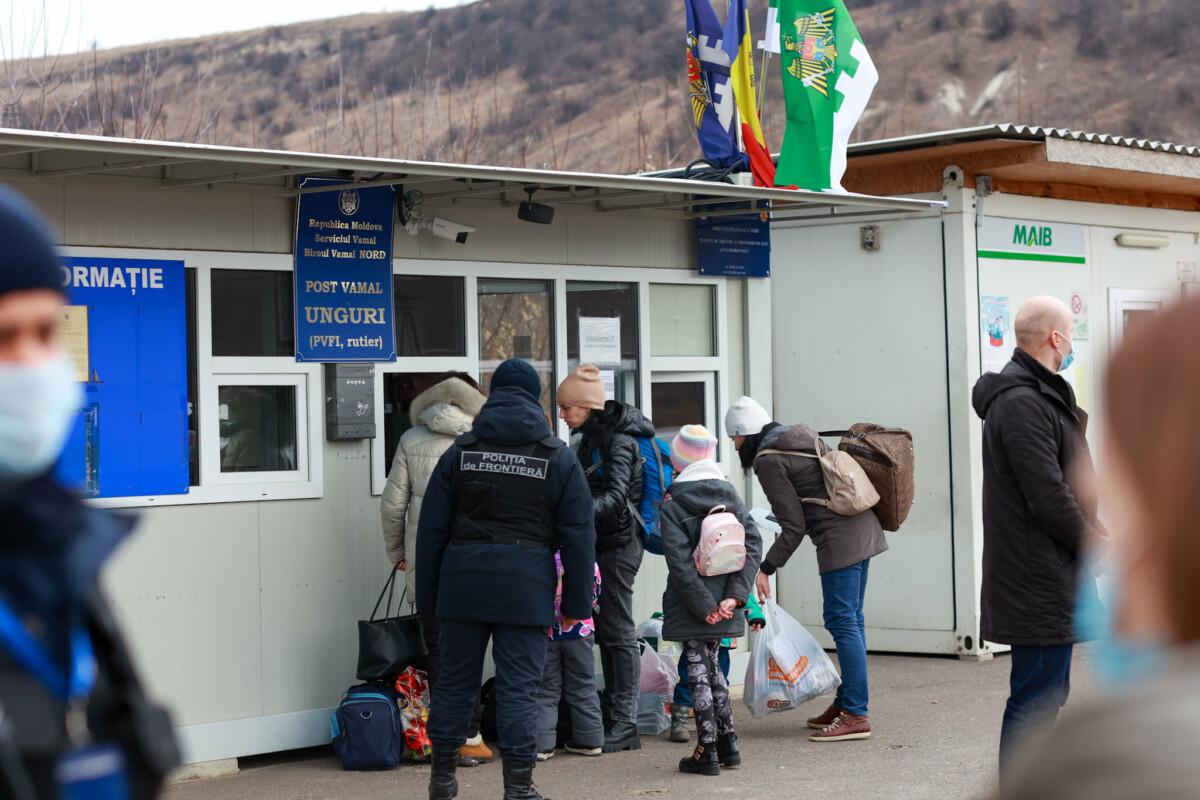
From 24th to 28th of February, 71 359 Ukrainian citizens entered the territory of Republic of Moldova. 33 173 of them left the country. As of this moment, there are 38 186 Ukrainian citizens in Moldova, who have arrived over the past 100 hours.
The Moldovan people and authorities have organized themselves quickly from the first day of war between Russia and Ukraine. However, in the event of a prolonged armed conflict and a continuous influx of Ukrainian refugees, the efforts and donations need to be efficiently managed. Thus, we inquired about Moldova’s long-term plan and the state’s capacity to receive, host, and treat a bigger number of refugees.
On February 26th, the Ministry of Labor and Social Protection of Moldova approved the Regulation of organization and functioning of the temporary Placement Center for refugees and the staffing and expenditure rules. According to the Regulation, the Centers will have the capacity of temporary hosting and feeding at least 20 persons, for a maximum of 3 months, with the possibility of extending this period. The Centers will also offer legal, social, psychological, and primary medical consultations to the refugees. The Center’s activity will be financed from budget allocations, under Article 19 of Provision no. 1 of the Exceptional Situations Commission from February 24th, 2022, and from other sources of funding that do not contravene applicable law.
The Ministry of Inner Affairs and the Government of Moldova facilitated the organization of the volunteers’ group “Moldova for Peace”. Its purpose is to receive, offer assistance and accommodation to the Ukrainian refugees. The group is still working on creating a structure, registering and contacting volunteers, etc. It does not activate under a legal umbrella.
Lilia Nenescu, one of the “Moldova for Peace” volunteers, said that the group consists of over 20 people. Other 1700 registered to volunteer by filling in this form, which is still available. The group consists of several departments:
The volunteers’ department. Its members act as fixers: they’re responsible for connecting the people in need of assistance with the appropriate department. Some of the volunteers are located in the customs points. “The Ministry of Inner Affairs sends us every day the list of the customs points where our assistance is needed, and we mobilize the volunteers”, says Lilia Nenescu.
The Goods Department manages all the goods donated by the Moldavian citizens. The donations are separated into categories: non-perishable foods and non-food supplies. The volunteers of this department sort the goods into packages to be distributed.
The Government intends to collect all the donations in four locations. The National Agency for Food Safety and the National Agency for Public Health will ensure mechanisms to confirm that all the deposited goods comply with safety and quality regulations.
The Service Department operates in 4 directions and needs the volunteer involvement of specialists in psychology, legal assistance (the majority of the refugees only have Ukrainian ID and birth certificates of their children); medical assistance; translation (a part of the refugees are not Ukrainian citizens).
According to Elena Mudrîi, the spokesperson of the Ministry of Health, so far there is no data about the number of Covid-19 positive refugees. She only mentioned two cases that needed outpatient medical assistance: a pregnant woman and the mother of a 4-day-old child.
The Accommodation Department. The volunteers are waiting for the centralized and updated information from the Ministry of Labor about the institutions offering accommodation, besides the houses offered by individuals.
The Transport Department consists of drivers organized in groups. They receive notifications about the number of people who need transportation from the customs points to the asylum centers for refugees.
The municipal authorities of Chișinău announced that the Ukrainian children refugees from the capital city will be enrolled in educational institutions. The authorities also intend to create Day-Care Centers for children, where they will be engaged in educational activities and will receive psychological assistance. Besides, the refugees from the municipal temporary accommodation centers receive individual and group counseling.
In addition to this effort, a group of volunteers consisting of Ana Gurău, Ana Popapa, and Andrei Lutenco developed, with the help of Cristian Coșneanu, the UArefugees platform, synchronized with the responses from this form. On the first day, 943 people offered their help using the form, and 110 people asked for help. According to Anna Gurău, the volunteers communicate with the Government in order to update the platform with the missing data.
Translation from Romanian by Natalia Graur


